New Life
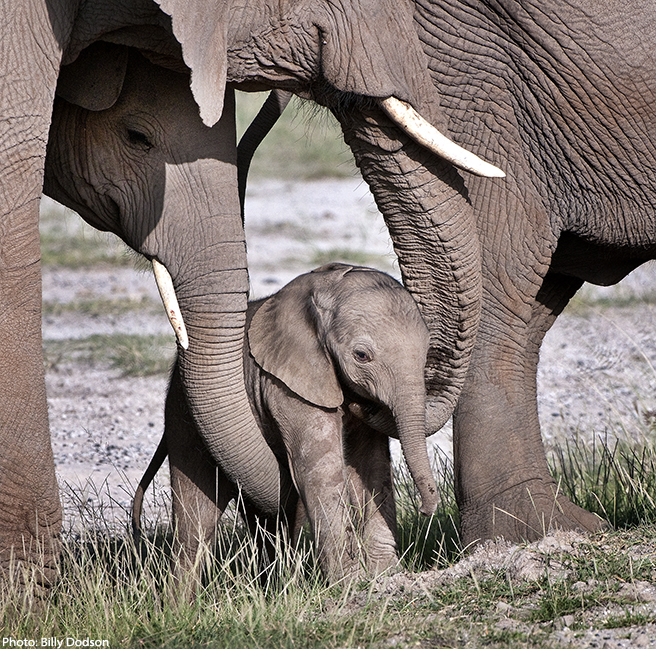
A few decades back from Carl Sagan …
“Memories of events late in the first year of life are not extremely rare, and there are possible examples of even earlier recollections. At age three, my son Nicholas was asked for the earliest event he could recall and he replied in a hushed tone while staring into middle distance, ‘It was red and I was very cold.’ He was born by Caesarean section. It is probably very unlikely, but I wonder whether this could just possibly be a true birth memory.”
– from “Dragons of Eden”
For reasons that defy explanation, I’ve spent a disproportionate amount of time trying to comprehend how the world must look and feel like to a newborn. I was in the delivery room for the birth of my youngest son and witnessed firsthand what must have been a very rude shock to his system … to pass from the warmth and security of his mother’s womb to the bright lights and controlled climate of the operatory. He was fortunate in many ways. A platoon of expert medical technicians was on hand to receive him and he was expeditiously cleaned, swathed in blankets and placed next to an exhausted but loving mother. He was safe from immediate physical harm and, unlike Sagan’s progeny, certainly has no memory of what must have been a less than pleasant accession to life on planet earth.
A newborn animal in the wild must surely be similarly bewildered and overwhelmed in the first few minutes of life. Spilling from complete maternal darkness to the powerful sunshine and pungent African earth must be a harrowing experience indeed. I suspect that the newborn initially senses nothing but blinding white light accompanied by a wild cacophony of strange and incomprehensible sounds. Within seconds, however, it would feel its mother’s presence and the quest for survival would begin in earnest.
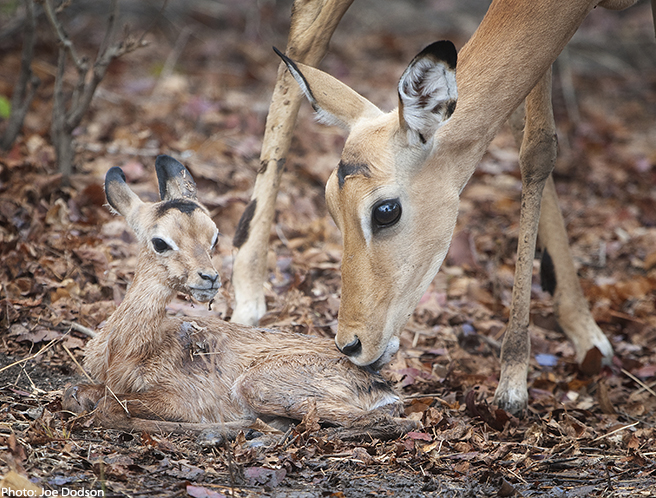
Mother impala welcomes her just born daughter to South Luangwa, Zambia and the world
Unlike human offspring, animals born on the savanna are at risk for their very lives from the instant of their arrival. In addition to the inherent difficulties of adjusting to a new and hostile environment, a newborn’s challenges are compounded by the existence of other species that would view it as a quick and easy meal. Consequently, each animal has evolved protective mechanisms for the very young, but the effectiveness of these strategies varies widely from one species to the next.
The baby elephant is certainly vulnerable to lion attack, but the strength and size of its family are formidable obstacles against any and all potential predators. An elephant mother, aggressively supported by sisters and matriarch, is a determined and fearless protectress. This unique combination of family, size, strength and maternal love is usually sufficient to convince a hungry lioness to search for easier prey. For these reasons, elephant youngsters have a much higher survival rate than most species.
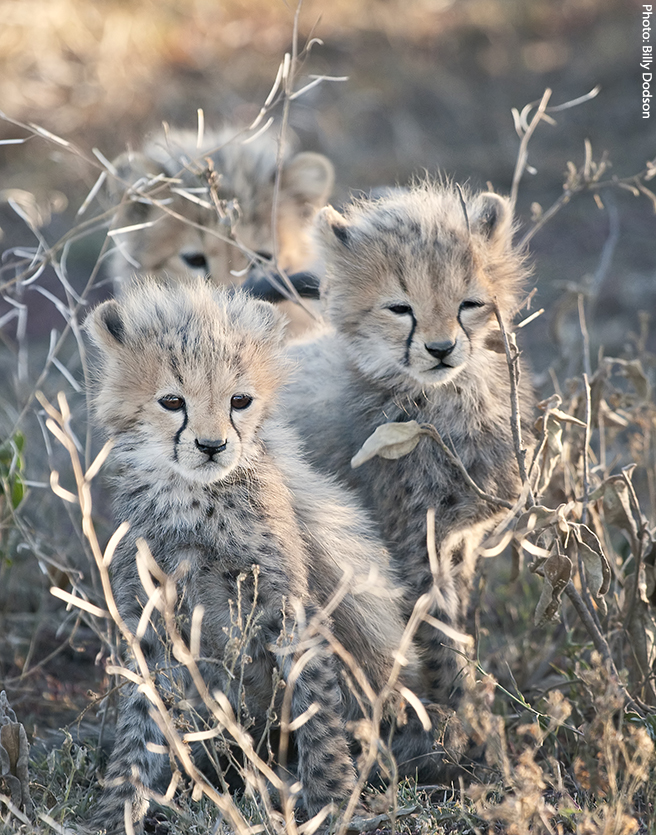
Three cheetah babies at Ndutu in the southern Serengeti
The offspring of the great cats are in no way exempt from Africa’s trials. Mother cheetahs produce the cutest (and most photogenic) young of any African animal in my opinion, but those little ones are fragile, and susceptible to destruction by any number of natural enemies. Young leopards are subject to the predations of hyenas, pythons and even baboons. Lion cubs are also threatened by hyenas … and they are actively pursued by Cape Buffalo, who bear a profound hatred for lions that’s very nearly unprecedented in the animal world. And invading male lions always kill the young cubs when they assume control of an existing pride. This brings the females into estrus and enables the new leadership to mate almost immediately.
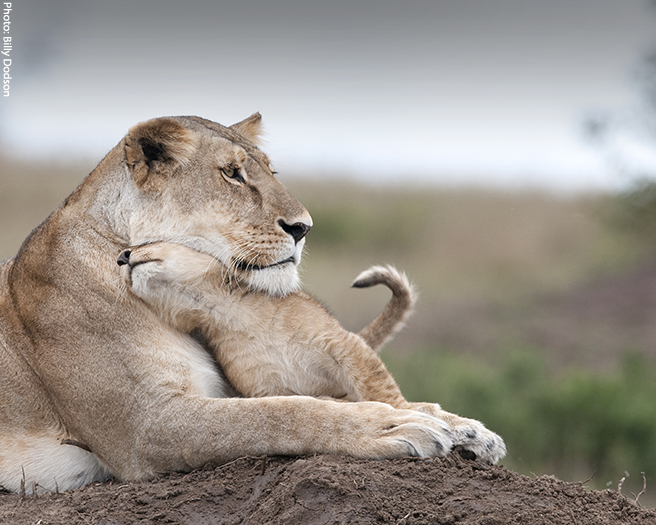
Lioness cuddling cub in the Maasai Mara
Survival is even more problematic for an ungulate offspring. A wildebeest calf must stand within minutes of birth and be able to maintain pace with the greater herd within three or four days. Baby gazelles have evolved an innovative survival strategy. They are virtually scentless at birth and instinctively become motionless when in the vicinity of a threat. Because their colors so closely match the savanna grass they are all but invisible and just barely detectable.
But none of these protective measures is perfect. Every birthing season is witness to the destruction of innumerable new arrivals. Nowhere on earth are the dual miracles of life and survival more visible than on the plains of the Mara and Serengeti. The birth, predator and prey cycle is one of East Africa’s most fundamental realities … and one of its most enduring fascinations.
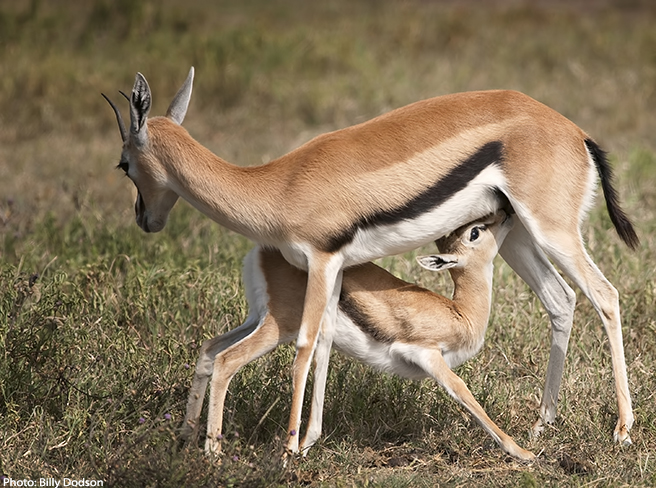
Young Thomson's gazelle suckling hard at Ngorongoro Crater
